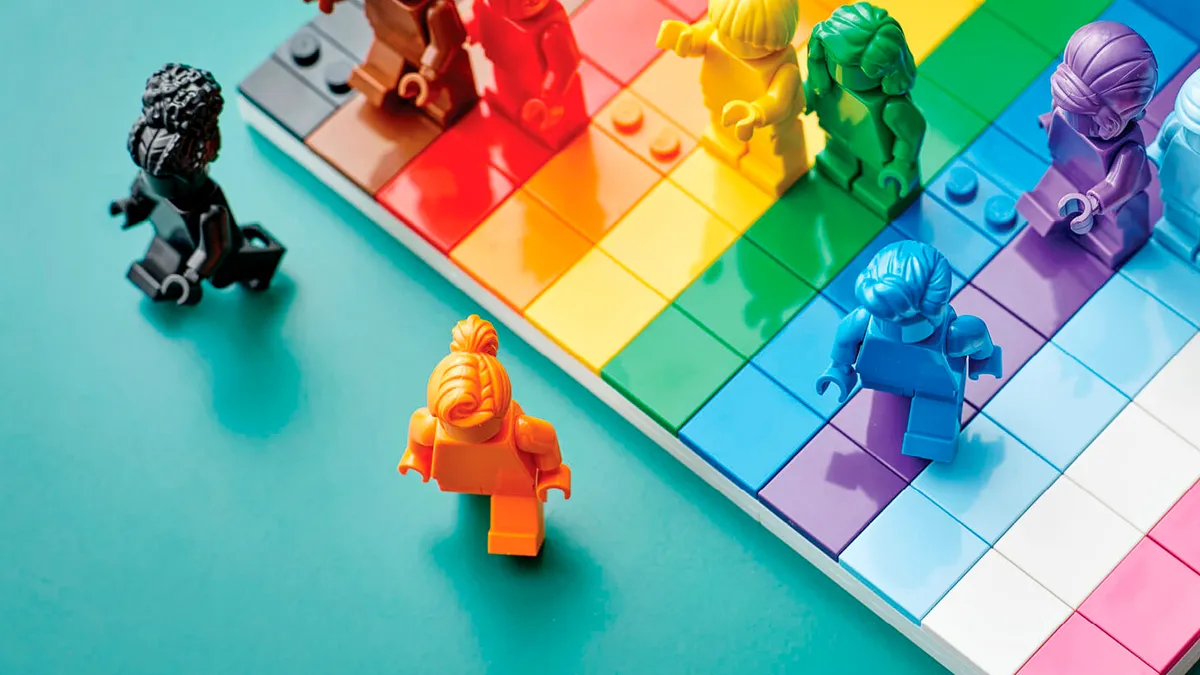LAS VEGAS — Diversity and inclusion goes beyond the demographic data the Census Bureau collects. I know this intellectually: It’s why Dayforce invited me to its Discover conference, to moderate a breakout session called "The Business Case for Belonging: Boosting Performance and Retention."
But it was my experience leading up to my session that reminded me of all the dimensions of my diversity — beyond my Blackness and transness.
The nature of the beast — work travel, that is — means I arrived in the cavernous halls of the Wynn right as the keynote address with Brené Brown was starting. Despite joining the throng to see the queen of authenticity-at-work advocacy, I was a little self-conscious about how authentic I looked right then.
In my boyfriend Levi’s, high-support Hokas and Nine Inch Nails sweatshirt, I wasn’t exactly exuding Las Vegas glamor. I was makeup-free, my roots were peeking out, and I was covered in a thin sheen of sweat and road dust.
It wasn’t so much the lack of makeup even as the sweatshirt.
A different kind of ‘only’
Most people my age or younger don’t look twice at my shirt. Meanwhile, a lot of older White women — the core demographic of many HR conferences — tend to shoot me a questioning look.
I imagine it’s a holdover from the inception of the culture wars on music, waged largely by Republicans in the 1990s and set in motion by Tipper Gore in the 1980s.
Nine Inch Nails’ The Downward Spiral came in the wake of 2 Live Crew’s landmark cases regarding obscenity in music. One of the main chart-toppers on the album faced censorship from MTV.
Its 1994 release also came at a time when rock and rap were bearing the brunt of negative attention. In condemnation of Time Warner, conservative thought leaders cited Tupac Shakur, Snoop Dogg and Nine Inch Nails as musical sources of cultural decay.
Safe to say, I understand why this shirt gets the side-eye — especially from people affronted by themes of depression and isolation, and the brashness with which Trent Reznor expresses his desire to question authority. It’s rhythmic and raw and unsettling, which is why I like rock ‘n’ roll so much.
Still, I felt a little unnecessarily edgy wearing it.
An underrated kind of inclusion
So you can imagine my surprise when I would have Dayforce conference attendees stop what they were doing to tell me they liked my shirt. The couple of times I got shout-outs, they came from an underrepresented demographic in the HR space: millennial and Gen X men. (Although, I’m not surprised: Even as a child, I’ve always had the music taste of a Gen X man.)
One man stopped his companion to talk to me and tell me how much he appreciated my shirt, and how he still remembers how he enjoyed attending The Downward Spiral tour. I lit up, telling him the truth: I was jealous of him. Despite attending dozens of gigs, Nine Inch Nails remains on my bucket list.
And as he walked away, in the spirit of Brené Brown, I stopped him.
Voice shaking slightly, I said, “Thank you for saying something about my shirt. I know that keynote touched on the idea of showing up as your authentic self, and this is how I show up as my authentic self.”
He thanked me; I turned back to my laptop. He rounded the corner. And then he backtracked.
“Well, of course I would say something to you. I just had to give you props, for being the kind of person who would even listen to Nine Inch Nails.”
Finding belonging in surprising places
In my work, by necessity, I talk a lot about diversity in easily quantifiable terms. In my session, my co-moderator and I mentioned not only race and gender identity, but veteran status, age and neurodiversity. But there are aspects of our identity, that make us different, that aren’t so easy to capture and calculate — but are just as unifying as cultural heritage, or the shared experience of womanhood or religious background.
It was refreshing to go into a space and feel like I was the “only,” only to be embraced by people who looked different from me. That night, I also freshened up my hair and brought myself back to my signature blue. I knew I would want to look and feel my best for the moderator role, and I ultimately crushed it.
I can’t attribute it all to the aquamarine hair dye. But the numerous Black women — and other conference attendees with colorful hair — coming up to me and complimenting me definitely helped. My favorite feedback was that my session was insightful, and that I gave attendees something they weren’t expecting in the realm of inclusion and belonging.
Turns out my conference experience gave me an insight I wasn’t expecting either: While the U.S. may have backpedaled on its commitment to inclusion and belonging, authenticity at work may still be en vogue yet.






















